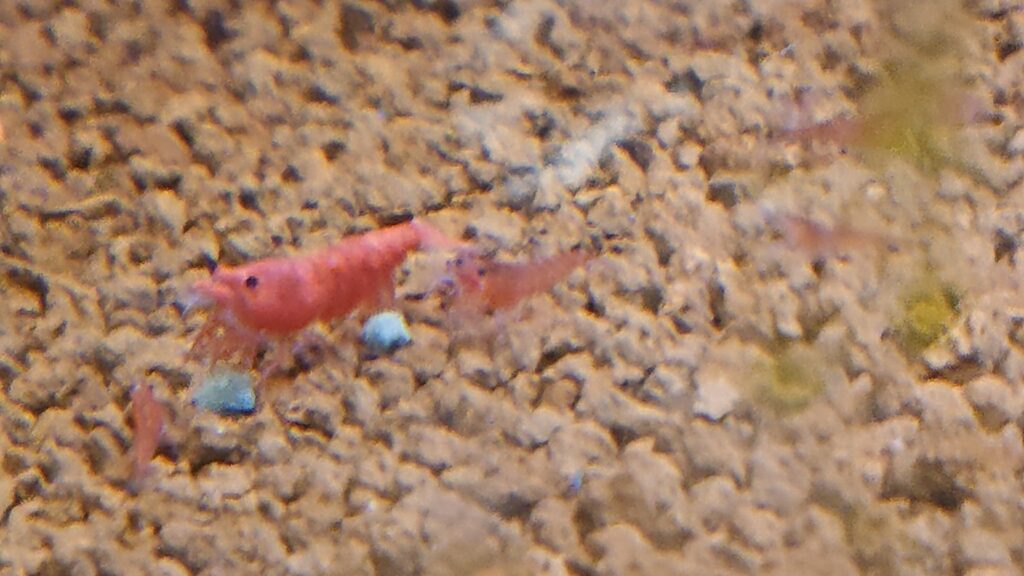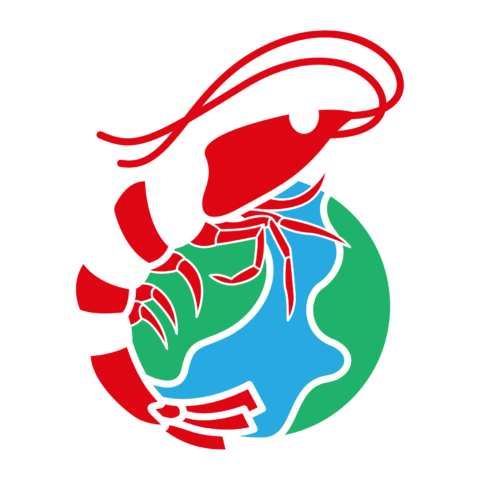Cherry shrimps are among the most sought-after freshwater invertebrates. Many aquarists include these shrimps because they’re attractive and easy to breed and feed. But do you ever wonder if cherry shrimps can also eat hair algae?
Cherry shrimp eat hair algae. However, it’s not their typical source of nutrients, as they’re omnivores and can feed on other foods. But if you’re having a problem controlling hair algae growth in your tank, you may want to consider having a colony of cherry shrimp in your tank.
Algae growth is one of those problems that fish breeders and aquarists have to deal with. In the rest of this article, I’ll discuss a few topics related to cherry shrimps and their feeding habits. Keep reading to learn what algae varieties this shrimp breed can eat.

How Cherry Shrimps Feed on Hair Algae
Cherry shrimps feed on hair algae, among other algae varieties. Moreover, cherry shrimps are omnivorous, as they also eat biofilms, decaying plant matter, and dead fish. However, aquarists don’t seem to agree on whether cherry shrimps are better hair algae feeders than Amano shrimps.
Hair algae are fast-growing green algae that infest both saltwater and freshwater environments. The thread-like algae have soft filaments that form a carpet-like covering on aquarium tanks. Therefore, if not controlled, they’ll grow over other plant forms in your tank and entangle the fish and other invertebrates.
Removing hair algae from your tank can be an uphill task. Therefore, introducing algae-eating shrimps is one way to deal with algae infestation in your aquarium. However, it’s not the most effective method of controlling algal bloom, as prevention is always the best approach.
Many aquarists prefer having cherry shrimps in their tanks to control hair algae since they’re easy to breed and fascinating to watch. These shrimp species usually eat algae by picking it with their feet and transferring it to the mouth.
Here are some of their feeding behaviors:
- Attachment: After locating the algae in the tank, the cherry shrimps will move to the location and attach themselves to the algae filaments. Then, they’ll start feeding on it even at sharp angles, as they’re small, lightweight, and flexible.
- Group feeding: If you have several cherry shrimps in your tank, you’ll notice that they sometimes feed in a group. So, they’ll move to a section containing hair algae and ‘graze’ on it before moving to another one.
What Other Algae Varieties Do Cherry Shrimps Feed On?
Cherry Shrimps also feed other algae varieties, such as green, black beard, and brown algae. If you’re worried about algae problems in your tank, having an army of cherry shrimps might help control the situation, as they’re fast feeders.
Now, let’s break down the algae varieties that cherry shrimps can feed on:
- Green Algae: They’re fast-growing algae that can occur in freshwater and saltwater aquariums. If not managed, the algae will thrive and tarnish your tank’s aesthetic look.
- Black Beard Algae: They appear as black tufts that also resemble short brushes. Like the green algae, the black beard algae are also a rapidly-growing variety that cherry shrimps can eat when other food types are unavailable.
- Brown Algae: They’re large multicellular (diatoms) algae. Typically, they grow in marine environments. Brown algae appear in cycling tanks when the water quality has deteriorated. While cherry shrimps can eat brown algae, getting rid of them by cleaning would be a better option.
Although cherry shrimps eat several algae varieties, there are some types that they don’t feed on. These include:
- Green-spot Algae: They appear as green spots in an aquarium. If your tank only contains the cherry shrimp species, you can only remove the algae by scrubbing your tank.
- Blue-green Algae: They’re a type of bacteria (cyanobacteria) and not algae that thrive in warm nutrient-rich water. Blue-green algae appear as blue-green blooms that have a characteristic musty smell.
- Staghorn Algae: They’re a type of red algae that resemble stag horns. Cherry shrimps and other aquarium-dwelling invertebrates find these algae unattractive, as they have several shades of grey. It’s also not easy to get rid of them manually.
How To Ensure Cherry Shrimps Feed on Algae
Have you noticed that your cherry shrimps are reluctant to feed on algae in the tank? Don’t worry. There are ways to encourage your cherry shrimps to feed on algae.
Here are a few ways to change their feeding habits:
- Don’t overfeed your shrimps with other food types, as they’ll have no interest in the algae.
- Remove algae varieties that cherry shrimps hardly feed on.
- Improve your tank’s water quality and other conditions, including pH, temperature, and nutrient levels.
Conclusion
Cherry shrimps have gained popularity due to their algae-feeding capabilities. They’re also attractive, intriguing, and fast-breeders. However, despite being great algae eaters, you can’t entirely rely on them to control algae blooms in your aquarium.
Sources
- Aquasabi: Hair Algae
- Aquasabi: Staghorn Algae
- Tropical Fish Magazine: Red Cherry Shrimp Care
- Pet Fish Online: Do Cherry Fish Eat Algae?
- Minnesota Pollution Control Agency: Blue-green Algae and Harmful Algal Blooms
Recent Posts
How Do Freshwater Shrimps Live? Freshwater shrimp are fascinating creatures that play a crucial role in aquatic ecosystems. They help maintain water quality by consuming algae and decomposing...
How Many Freshwater Shrimp Per Gallon? 4 Key Factors Freshwater shrimp are popular additions to aquariums, but many hobbyists wonder: how many shrimp can comfortably live in a gallon of water? The...

